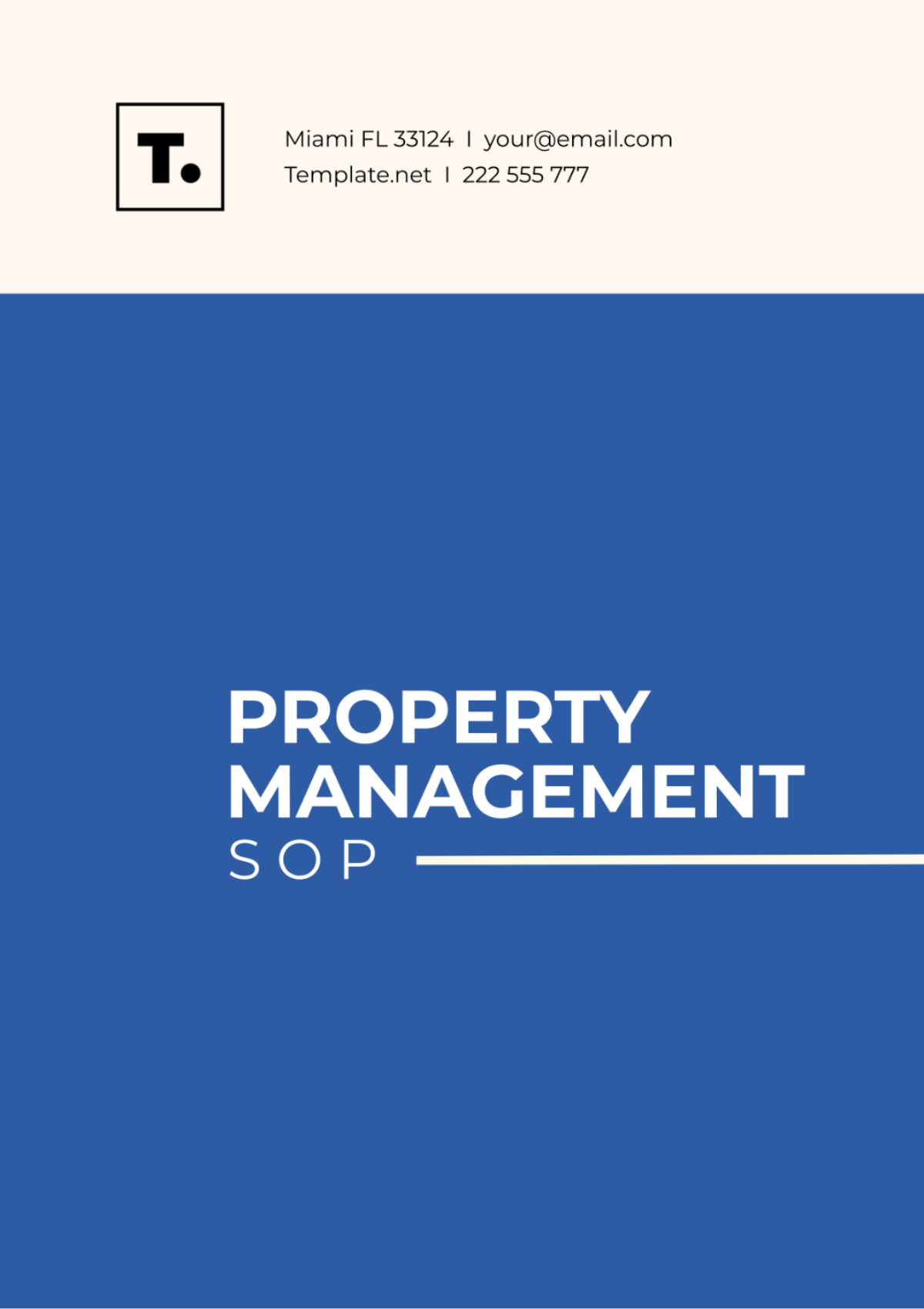Property Management Standard Operating Procedure (SOP)
I. Introduction
The Property Management SOP serves as a reference guide for property managers and staff involved in property management activities. It outlines the standard procedures to be followed to achieve operational excellence and ensure consistent service delivery.
II. Roles and Responsibilities
Property Manager: Responsible for overseeing all property management activities, including tenant relations, maintenance, financial reporting, and compliance.
Maintenance Team: The tasks that are included encompass conducting routine inspections, undertaking necessary repairs, and maintaining the upkeep of the property.
Accounting Team: The individual manages processes related to financial transactions, is responsible for budgeting tasks, and takes charge of reporting finance-related information.
Legal Counsel: Guides that focus on issues regarding legal matters, details about lease agreements, as well as dealing with compliance issues.
III. Tenant Management
3.1 Tenant Screening
Make sure to conduct an exhaustive investigation of background information, check the credit history thoroughly, and verify the past rental history of any individuals who may potentially become tenants.
3.2 Lease Agreements
Generate lease agreements and undertake the task of their management. Within these agreements, ensure that the responsibilities expected of tenants are clearly outlined, put into place stipulations regarding rent payment terms, and confirm the duration of the lease.
3.3 Rent Collection
It is crucial to establish unequivocal procedures for the collection of rent. This includes clear guidelines for the levying of late fees when rent is not submitted on time. Furthermore, protocols should also be firmly in place to deal with the handling of delinquent payments that are either past due, incomplete, or missed entirely.
3.4 Tenant Communication
Ensure to regular communication with the tenants, keeping an open dialogue, to effectively handle maintenance requests and lease renewals. Additionally, their concerns need to be quickly addressed to ensure smooth management. This can greatly enhance the landlord-tenant relationship, maintaining a healthier and happier living environment.
IV. Property Maintenance
Preventative Maintenance: Implement regular inspections and maintenance schedules to prevent costly repairs and maintain property value.
Emergency Repairs: Establish protocols for responding to emergency maintenance issues such as plumbing leaks, electrical problems, and security breaches.
Vendor Management: Establish coordination with vendors, who are recognized as reliable, to obtain services related to maintenance, conduct repairs, and organizing renovations.
V. Financial Management
Budgeting: Develop annual budgets for property expenses including maintenance, repairs, utilities, and property taxes.
Rent Collection and Reporting: Track rent payments, generate rent rolls, and prepare financial reports detailing income, expenses, and profit margins.
Expense Management: Monitor expenses closely, seek cost-effective solutions, and review financial statements regularly for accuracy.
VI. Legal Compliance
Lease Compliance: Ensure lease agreements comply with local, state, and federal laws regarding fair housing, eviction procedures, and tenant rights.
Regulatory Compliance: Stay updated on zoning regulations, building codes, environmental regulations, and property tax requirements.
Documentation: Maintain accurate records of leases, maintenance activities, financial transactions, and legal correspondence.
VII. Emergency Procedures
7.1 Emergency Contacts
It's essential to keep a compiled list that contains the necessary information for emergency contacts. This list should consist of various important contacts such as those related to maintenance, vendors who provide essential services, security personnel who ensure the safety of the premises, and also contacts from utility providers who ensure the smooth function of essential utilities.
7.2 Emergency Response Plan
Embarking on the creation and communication of a thorough emergency response plan is crucial. The plan should illustrate the fitting protocols for different scenarios, including fire incidents, natural disasters like earthquakes or hurricanes, security threats that may jeopardize individual safety and immediate medical situations.
VIII. Document Management
Record Keeping: Establish a system for organizing and storing property-related documents, including leases, maintenance records, financial statements, and legal documents.
Digital Documentation: Make use of digital platforms and take advantage of cloud storage systems to maintain a document management system that is not only secure but also easily accessible.
IX. Approval

[Approver's Name]
[Approver's Role]
[Approval Date]
Standard Operating Procedures Templates @ Template.net































